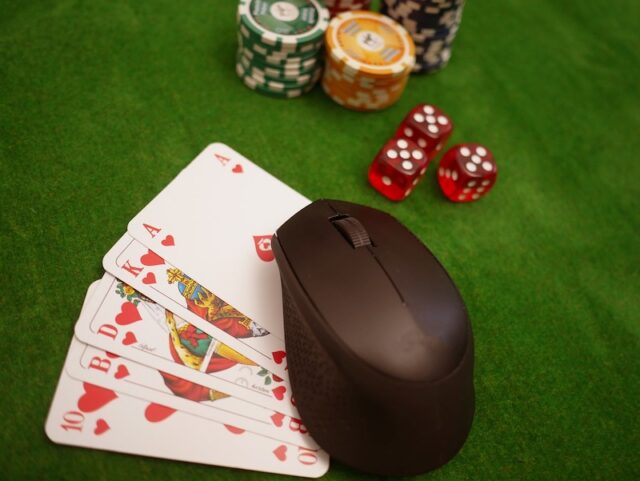Poker, blackjack, and baccarat are at the forefront of classic card games, even in the modern era, and they’re used as a form of entertainment or viewed as an opportunity to gamble and earn some winnings. Still, card games are much deeper than this. Interestingly, the origin of playing cards dates back more than 1000 years to the Qing Dynasty of ancient China and ended up circulating the globe as modifications of its original pieces became the reasoning behind evolutions such as modern-day poker, like we know today. The history of playing cards is a captivating journey of development and delivers a compelling origin story to how modern games are played today.
Central Asian card games with the utilisation of dominoes are where it originates. While dominoes weren’t new, they were instrumental in causing the creation of their paper variants – paper slips made to replicate dominoes as a cheap alternative to their wooden or stone counterparts. Original dominoes held their popularity in Asia; the paper variants and the art of papermaking advanced west and caused a creative flare. Paper cards first landed in Korea, unlike China; the Koreans created a new deck comprising eight suits and ten cards boasting a general as the highest card in each suit. It’s said the Koreans invested suits within playing cards, although different from what we know today.
Playing cards remained within Eastern Asia for centuries, but in 1000 A.D, Chinese papermakers were held captive following a war with the Persians. Once in Samarkand – the former capital of Persia – the captives and their secret papermaking skills were revealed. As the Persians began to practise the leaked skills of the papermakers, it didn’t take long before playing cards were made, and more modifications were made to decks and suits.
Europe wouldn’t see playing cards for another 300 or so years. It’s rumoured that European merchants returned home with playing cards from Israel. Either way, card popularity soared around the European Renaissance’s infancy. The timing of playing cards’ arrival to Europe conveniently arrived as the continent rapidly grew monetarily and culturally. With bigger pockets, the populace spent a lot of leisurely time playing cards, and with this came countless developments in new games. Classics such as Poque – pokers origin game – and Vingt-et-Un – blackjack origin game – were amongst the most popular.
Playing Cards in the 1800s
Poker has existed since 1829, originally known as ‘Poques,’ and although not identical, it is similar to today’s draw poker. Back then, decks didn’t have 52 cards, and the hand ranking system was simpler; full houses also didn’t exist.
What you know as 21 or blackjack, was incredibly popular in Europe, landed stateside, and became popular in areas like New Orleans – notably the same state that assisted in the rising popularity of poque. More interestingly, the USA gifted 21 its name, ‘blackjack’; it stuck and is still labelled in this fashion today.
The United States was additionally responsible for naming the Joker, then ‘juker’, around 1870. Before Aces, the juker was the game’s highest card. By the 1880s, it had officially been renamed ‘Joker,’ referencing jesters and clowns.
Playing Cards: The Gambling Industry Impact
Fast forward to 1930, Nevada State birthed the legalisation of gambling and included playing cards within its list of games. While card rooms had previously existed, they hadn’t been promoted and pushed on such a scale. Furthermore, there were many issues with playing cards and gambling, including card sharps, who used a system to cheat the game. To protect the average player, Assembly Bill 98 allowed for licensing and regulation, as many establishments opted for the safer, legalised approach to playing cards.
Las Vegas is the gambling capital of the world. If you are playing poker today, participating in new slot games available online, or playing a simple hand within the comfort of your home, the meteoric rise and popularity of card games in today’s Western world can undoubtedly give a small thanks to the bright lights of Las Vegas, Nevada.
Playing Cards in the 1900s
Playing cards and gambling really took form during the 1990s, specifically after the first and second World Wars. The legitimacy of the Las Vegas approach to gaming houses was being emulated throughout Europe, as many casino locations were opened around the globe.
Major players in business looked towards the industry, and by the 1970s, countless iconic casinos were opening their doors. The Las Vegas Strip was born, and with the expansion, we saw the introduction of poker, baccarat, and multiple card game variations. Today, Vegas remains one of the most popular playing cards gambling destinations worldwide.
Playing Cards in the Modern Era
The most obvious change in modern-day card playing would be its entanglement with technology. Since online gambling was regulated in the early 2000s, its growth has been unprecedented. Every owner of Microsoft-powered computers from the mid-90s to today will remember the built-in solitaire card game, but that’s just a smidgen of significance compared to playing cards’ popularity within the gambling industry.
In the United Kingdom alone, it’s estimated that 43% of the UK population participates in gambling every month, and 26% is online. Amongst the online gambling activities, playing card options are endless. It’s a whole new world, from classic card games, challenging ones, easy card games, free casino card games, and more. Gamblers can join live dealer casinos from any mobile device, as most casino brands have developed downloadable apps. Many will slander these advancements versus the traditional game; we must accept the evolution of cards and how it’s different from over 1300 years ago.
Behind a storied past, with its history cemented, we don’t expect playing cards to drift into obscurity anytime soon, if at all. It’s one of the world’s oldest social pastimes and will continue to grow but never fade, as it has done for so long.




